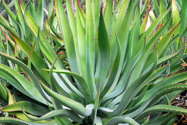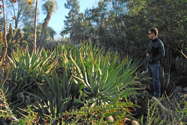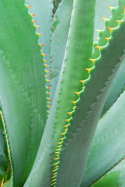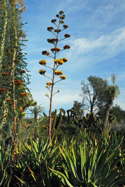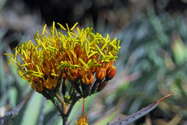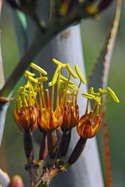Not described until 1978, this plant was grown at the Huntington since 1966 as A. brandegeei, a horticultural synonym, until Gentry clarified its status a dozen years later. It is endemic to the Cape region of Baja California where it forms solitary or clumping rosettes to about a meter (3') in diameter. Branching can be basal or axillary making for a rather busy mass. Solitary rosettes better show to advantage the slender, arching leaves, their margins lined with prominent, hooked, corky teeth giving them a mammillate silhouette. While not typical, one rosette that recently flowered in the Baja bed formed a mass of bulbils on the inflorescence affording this distribution: rooted bulbils of HBG 18880, a plant received from Ted Hutchison, January 29, 1966. On a historical note, Hutchison was active in the Mojave Desert Cactus Club and the Gates C&SS as well as the CSSA until the 1970s. He travelled in Baja with Howard Gates who described Mammillaria hutchisoniana in his honor and George Lindsay who described M. louisae after Ted’s mother Louisa who inspired Ted’s interest in succulents. As fate would have it, M. louisae is now considered a subsp. of M. hutchisoniana. A memorable quote is attributed to Ted: “What are spines for? To stick unbelievers.” $6.
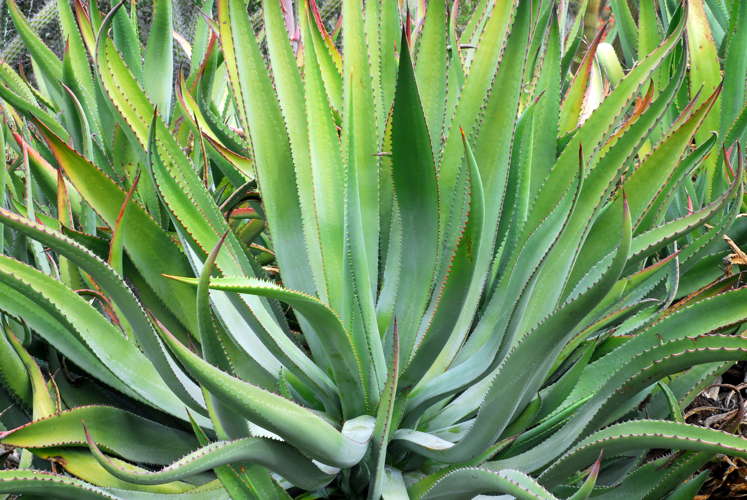
Published in the Cactus and Succulent Journal, Vol. 86 (2), March - April, 2014
